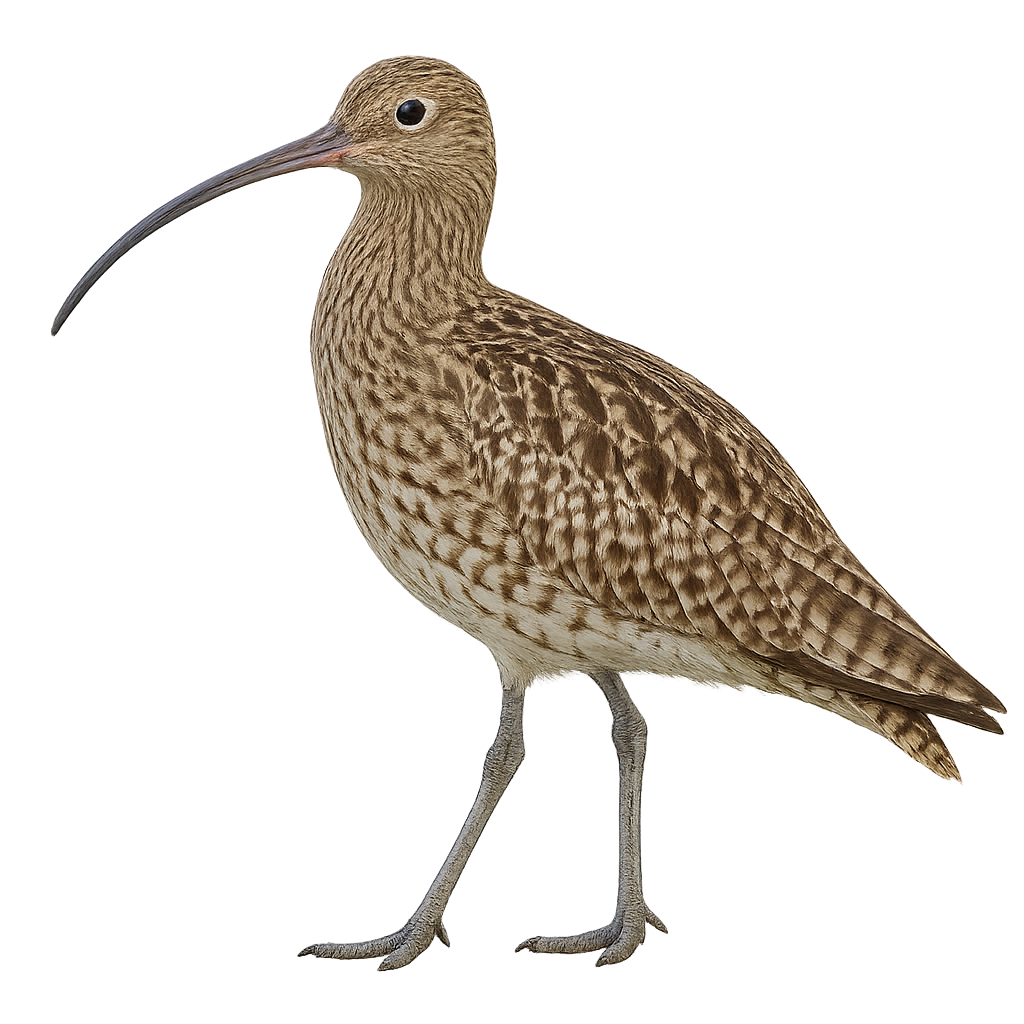Observe and photograph a species in its natural habitat
Learn where and when to observe a species in the wild, how to recognize it in the field, and what habitats it lives in. Get photography tips adapted to its behavior and capture stunning images without disturbing the animal. For full details, open the complete profile in the WildlifePhotographer app.
Eurasian Curlew
Scientific name: Numenius arquata

IUCN Status: Near Threatened
Family: SCOLOPACIDAE
Group: Birds
Shyness: Shy
Safe distance: 40 m
Breeding season / Courtship: 01.04-30.04
Gestation: 27 à 29 jours
Births: 28.05-29.06
Habitat:
Wetlands and marshes
Description:
The Eurasian Curlew is a large wader, easily recognizable by its long, down-curved bill and gray-brown plumage with dark speckling. This wader has a slender silhouette, long legs, and broad wings. It measures about 50 to 60 cm in length, with a wingspan of 90 to 105 cm. During the breeding season, the Eurasian Curlew has brighter and more contrasting plumage, but it becomes more subdued during winter, with duller tones.
The Eurasian Curlew primarily feeds on earthworms, invertebrates, and small crustaceans, which it captures in marshy areas, wet meadows, or along riverbanks. It is mainly observed in coastal areas or estuaries, where it forages by probing the ground for food. Although it is migratory, the Eurasian Curlew breeds mainly in Europe and winters in North Africa and southern Europe. It is currently classified as vulnerable due to habitat loss and disturbances in its breeding areas.
Recommended lens:
>=300 mm
Photography tips:
Use a telephoto lens to capture images from a distance, respecting the discreet nature of the species.
Photograph early in the morning or late in the afternoon, when the soft light enhances the curlew’s plumage.
Look for it in wetlands: marshes, estuaries, mudflats and sandbanks exposed at low tide, as well as wet meadows and peat bogs.
Be patient and discreet to avoid disturbing its natural behavior.
The Eurasian Curlew is classified as Near Threatened by the IUCN. It is sensitive to habitat loss and human disturbance. It is essential to respect its environment and minimize disruptions, especially during the breeding season.
Ready to take action?
Choose your platform and start your free trial today



